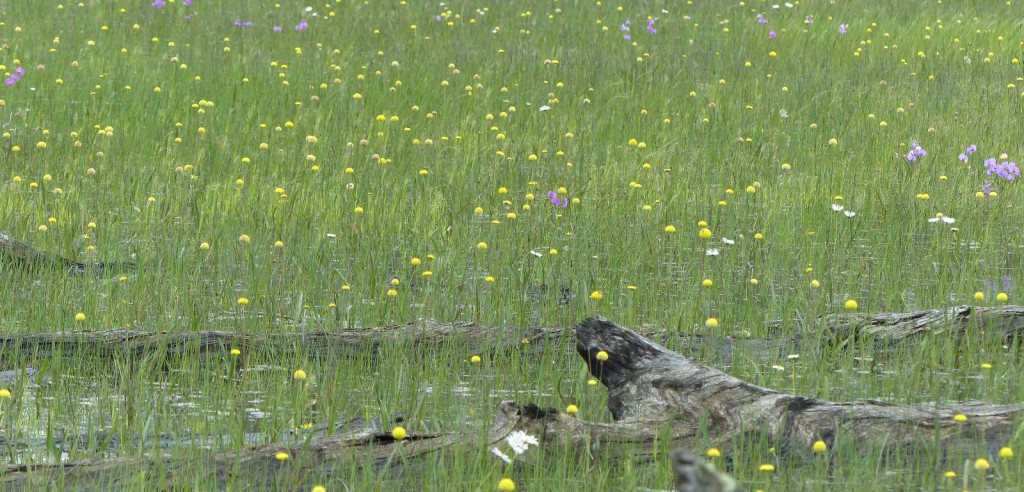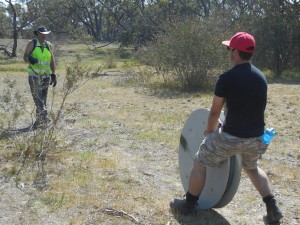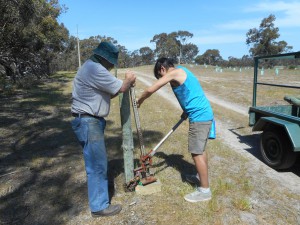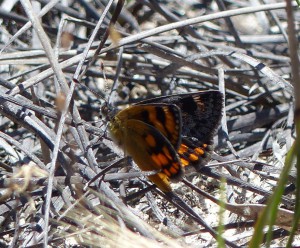Eaglehawk Waterhole restoration update – covering all the big news from late 2016
Humble apologies for not providing an update before now. Burning the candle at both ends and all that!!! Please enjoy a short summary of the people and activities of Eaglehawk Waterhole Restoration Reserve over the last few months to the end of 2016.
Water, wetlands, and wildflowers
It was a fabulous winter-spring season with every low point at Eaglehawk Waterhole inundated this year, whether it be overnight or for a few days up to many months. I recall the previous owner stating how each spring there would be 6 inches of water over the flats. Although we didn’t achieve that completely I can believe it after this year.
Andy’s camp was inundated on several occasions, with the camp area temporarily abandoned. Almost every dam was filled to the brim, especially those which are linked to a large wet flat/watercourse area. And didn’t the seasonal herbaceous wetlands and grassy wet woodland flora love it. Tatiara Pea (Swainsona procumbens) was out like I’d never seen it before. And of course the Wood ducks made the most of the season hatching out a few ducklings.
One unfortunate consequence with dams is they actually acted like drains on the wet flats/watercourses, so we are investigating options to remedy that for a few of the better quality watercourses in the hope of holding up more water in the wetlands and on the watercourses rather than aiming to fill the dams. We don’t run livestock so the dams are no longer required, although watering points for wildlife is still of consideration.
Fence removal
Would you believe that all fences are now removed, all of them. Not just the old ones, but the new ones too. Can you believe it!! What a massive effort by the fencing crew lead by Fred Aslin over the past two years. Pulling down of old fences started February 2015 & was completed in April 2015. Due to cuts in a newer fence having already been made for rabbit control (May 2015), it was decided that selected portions of the newer fence could now be pulled down. At this point it was necessary to invent a method of rolling the plain wire as it was clearly reusable.
Trips from 2-5 Oct 2015 saw the commencement of this process, which was continued on 12-16 Mar 2016, 22-24 Apr 2016,11-14 June 2016, 27-28 Aug 2016, 2 Sept 2016, 4-5 Nov 2016, 26-31 Dec 2016. This work was only interrupted by the need to pull down & roll up the southern boundary fence. This project was completed on 31 Dec 2016 with the removal of the last pine posts.
Workers involved at various stages were – Fred & Jeanette Aslin, Dave Lawson, Andy Lines – who made a major contribution with & without Mt Gambier crew, Rob (Andy’s Stepson), Glen Bowman, Rod Lockwood, Amber Masterman, Regan Smith, Steven Kennedy and Brayden Beare.
We intend to re-use the second hand materials at Mt Burr Swamp and other NGT conservation projects in the future.
Landscape Links Update (via Cassia Hlava)
The NRSE Landscape Links revegetation (the area out the front/road side of the property) is booming after a much needed winter spring rain. Many of the species planted in 2014 and 2015 have flowered recently including: Running Postman, Heath Tea-tree, Myrtle Wattle, Chocolate Lily, and Muntries. Recruitment is a key indicator of revegetation success and we hope to see seedlings of these species popping up in the near future.
Natural regeneration from soils seed banks is continuing nicely, with less common species such as Leafy Templetonia, Creamy Candles and Eutaxia appearing in SA Blue Gum woodland within the corridor area. Managing Perennial Veldt grass is a key challenge in successful restoration of these important grassy woodland habitats.
The annual Bangham bird monitoring was once again held at Eaglehawk Waterhole in early November 2016. During the weekend, Cassie spotted a White-throated Gerygone which is both a rare visitor to the South East of SA and a new bird species record for the reserve.
Weed control in Blue Gum woodlands
Sam Rothe and Andy Lines spent several days spraying phalaris, Paterson’s curse, and thistles out in various areas to improve the quality of the woodlands and capitalising on previous effort. It was great to see the yellowing leaves of dying weeds dotted throughout the property on my occasional visits. Introduced Olives and Cootamundra wattles were also not spared with several cut down during this period including in the neighbouring property’s Heritage Agreement which was a potential source for spreading further out into the bush on Eaglehawk.
Insect diversity
Ants have been surveyed by John Samuel-White, Andy, and myself over the past two years which has resulted in a large species list for the property. One in particular is of interest to the SA Museum as it is apparently a new discovery for SA.
Andy and I were hopeful of finding a very rare butterfly called the Fiery Jewel, as its food plant is common on the property. On 6 Dec, we managed to find them, along with the Pale Sun-moth and Large skipper (Motasingha trimaculata). So a brilliant season for insects too.
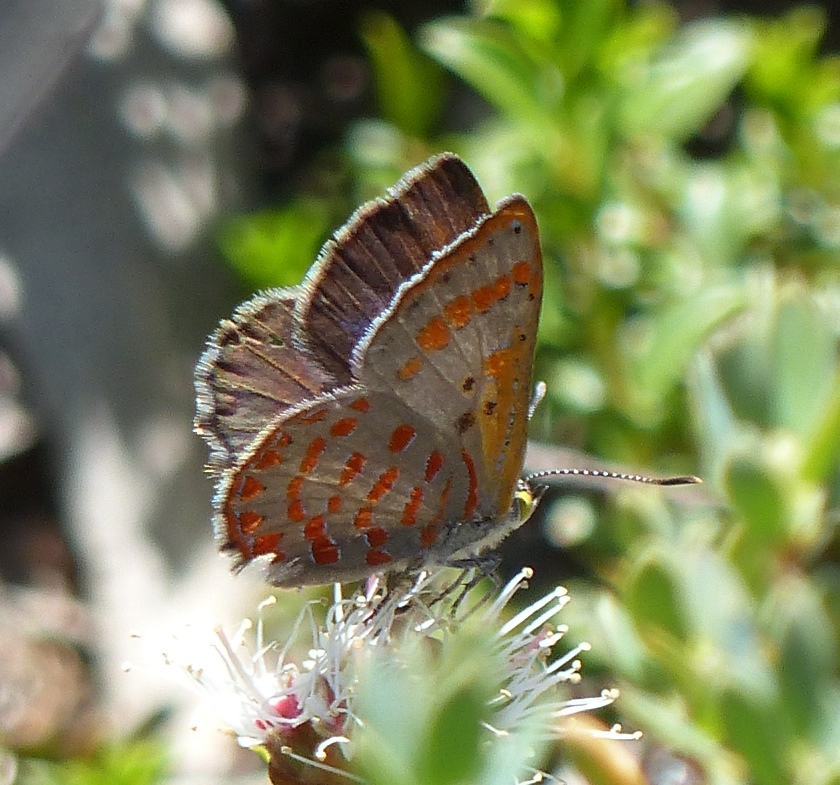
Fiery Jewel (Hypochrysops ignita), a rare butterfly gem of the Bangham district – note the bright red in the underwing. Seen in ecotone Stringybark with Blue Gum habitat.
Revegetation health checks
Survivorship in the 20 Million Trees revegetation area (out the back), some 70 ha, was checked back in early November. Over 1000 plants were counted, and what a great result with over 99% alive and well. Thanks to Sam, Andy, and Gabbi for undertaking the count and collecting all of this data.
December saw decent rainfall of 40 mm according to Andy’s records, so depending how wet January turns out to be, we may not need to water much or at all this summer. As we are all very aware, 2016 was a wet year, with 450+mm of rainfall at the property (Jul-Dec). In comparison, during the same period the previous year, only 146 mm fell at Eaglehawk. Thanks for all your records Andy!!
Upcoming activities
We have a bunch of activities planned for Eaglehawk in the coming months:
- Installing nest boxes (designed by the Millicent Mens Shed and donated to Lake McIntyre Management Committee and excess were given to us via the Boyle family).
- Rabbit warren fumigation
- Track rationalisation
- Insect collection compilation and identification
- Seed collecting and propagation
- Health checks of revegetation in late summer and possible watering
Just a reminder, Eaglehawk is available to YOU! If you’d like to visit, either as a day trip or to camp, please get in touch with us to arrange access. A roadside marker sign was recently installed at the site so you should be able to find the property easily.
Stay tuned for the next update!

